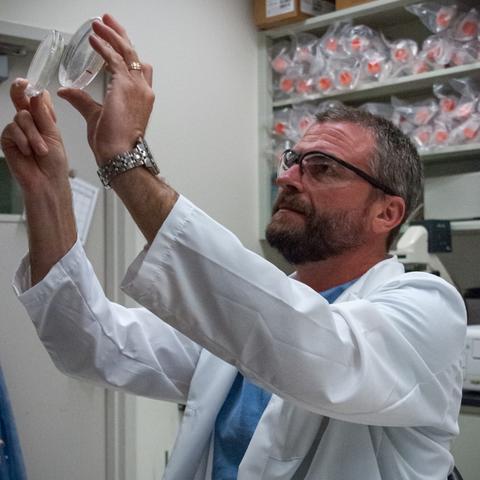
Scott Jackson is not alone in this picture. It’s him, and his microbiome.
The human microbiome is defined as all the microbes that live in and on the human body. A person’s body contains more microbial cells than human cells, and collectively, they have a huge effect on health.
Scott leads NIST’s complex microbial systems group. But he’s never taken a class in microbiology. His training is in biochemistry and genetics. He considers himself a molecular geneticist.
So how did he start studying the microbiome?
Scott used to work at the U.S. Food and Drug Administration doing molecular epidemiology and microbial forensics. If there was an outbreak of salmonella, for instance, he and his colleagues would use genetics to identify the source of the outbreak, similar to how a crime investigator can identify a suspect by their DNA.
That work was about using DNA sequencing to identify individual strains of microbes. But DNA technology has advanced rapidly in recent years, and today, scientists can use “next-generation DNA sequencing” to identify tens of thousands of species of microbes at the same time.
Today, Scott is leading efforts at NIST to develop tools and standards for measuring the human microbiome. This in turn will help pharmaceutical companies to develop new types of drugs that contain living bacteria, or “bugs as drugs.”
It’s a fascinating role for Scott, who uses his background in molecular genetics in a new way to help promote human health and well-being.
“We need these microbes!” Jackson said. “They’re not just hanging out with us. They are necessary for our survival.”
Follow us on social media for more like this from all across NIST!

